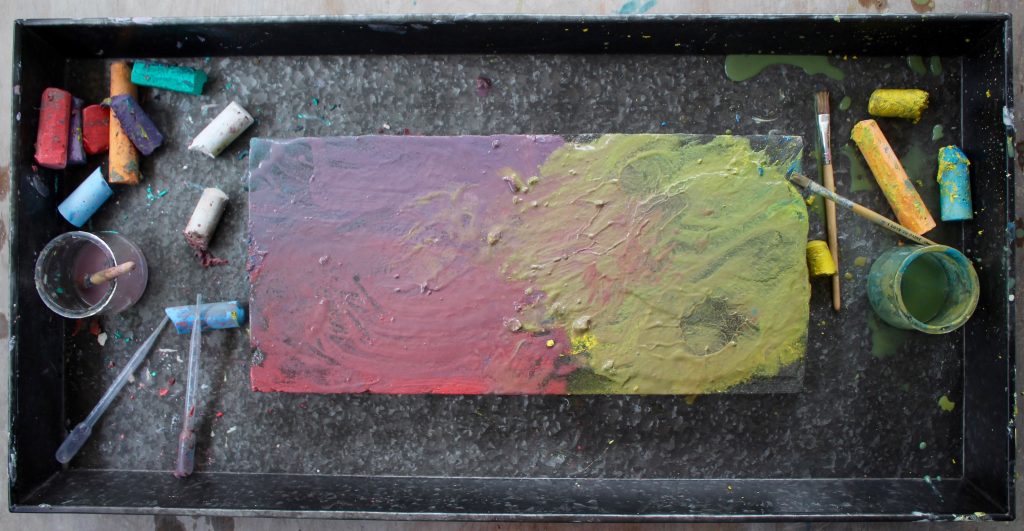“Tinkering is closer to the way real scientists, mathematicians, and engineers solve problems. Tinkering is not just an uninformed or immature way that science happens. Sure, scientists make plans. They also follow hunches, iterate, make mistakes, re-think, start over, argue, sleep on it, collaborate, and have a cup of tea. Tinkering is encouraging making connections."
-Invent to Learn, Sylvia Libow Martinez and Gary Stager, Ph.D.
Last Thursday, Marky made a discovery. Messing about with chalk and water, he created blue water by "melting" the chalk. “First I got a bucket, a small bucket. Then I took it (chalk) out. I did that with my finger nail and put it in. I made blue water.” Walking around the bucket again and again, Marky sang aloud, "Melting, melting, melting..." This week we brought Marky's discovery into our studio, presenting the children with tools and materials to explore. Written on our message board, we asked, Can we melt chalk like Marky did? Looking back on their experience, we ask...
What are the children figuring out?
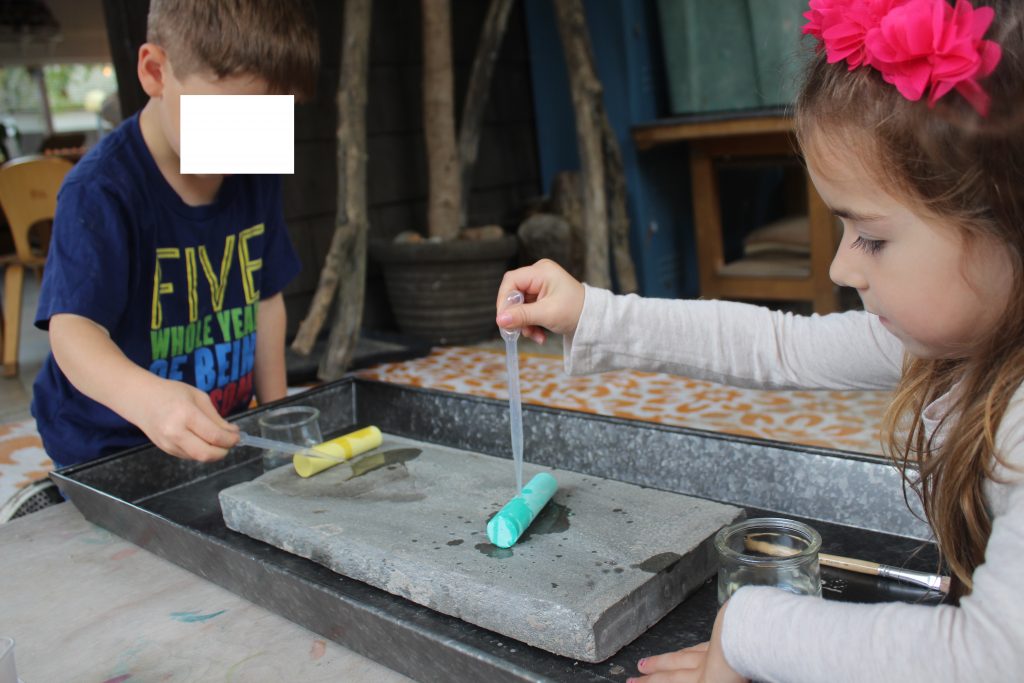
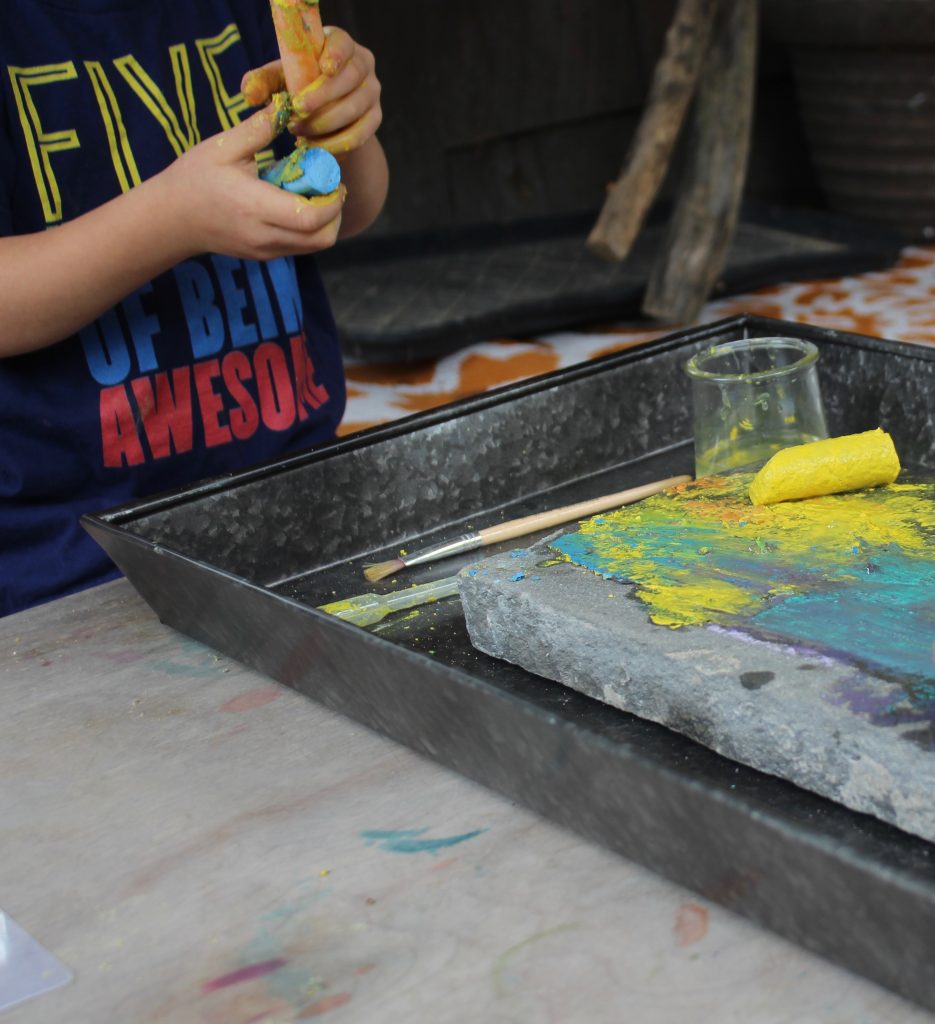
“We’re gonna melt the chalk. It fizzes.” JOSEF
“It colors different. It colors watery.” PARKER
“[The water] goes inside the chalk and then it gets wet.” JOSEF
“I think he dumped the water on the chalk.” AVERY
“Why not connect our together?” JOSEF
“Let’s see what happens when the color is mixed.” RUBY
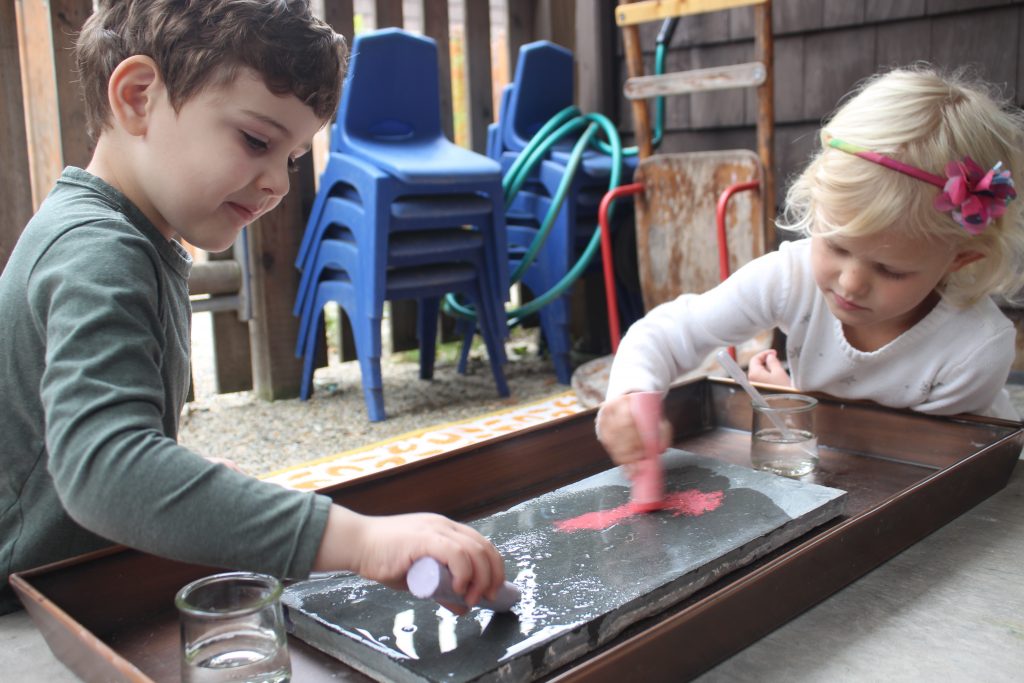
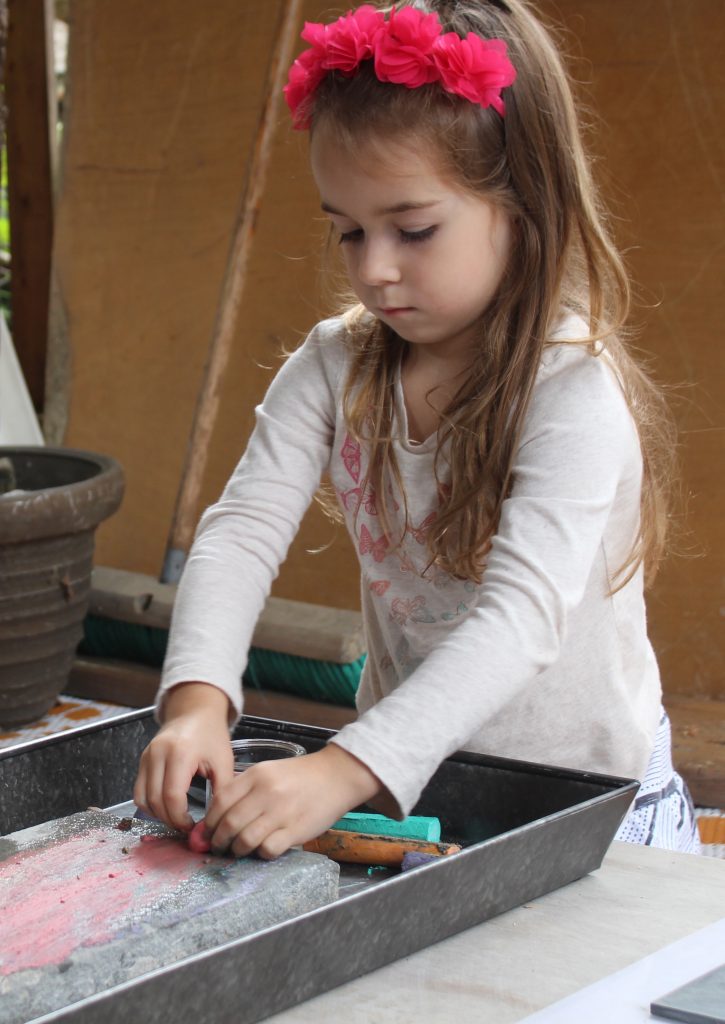
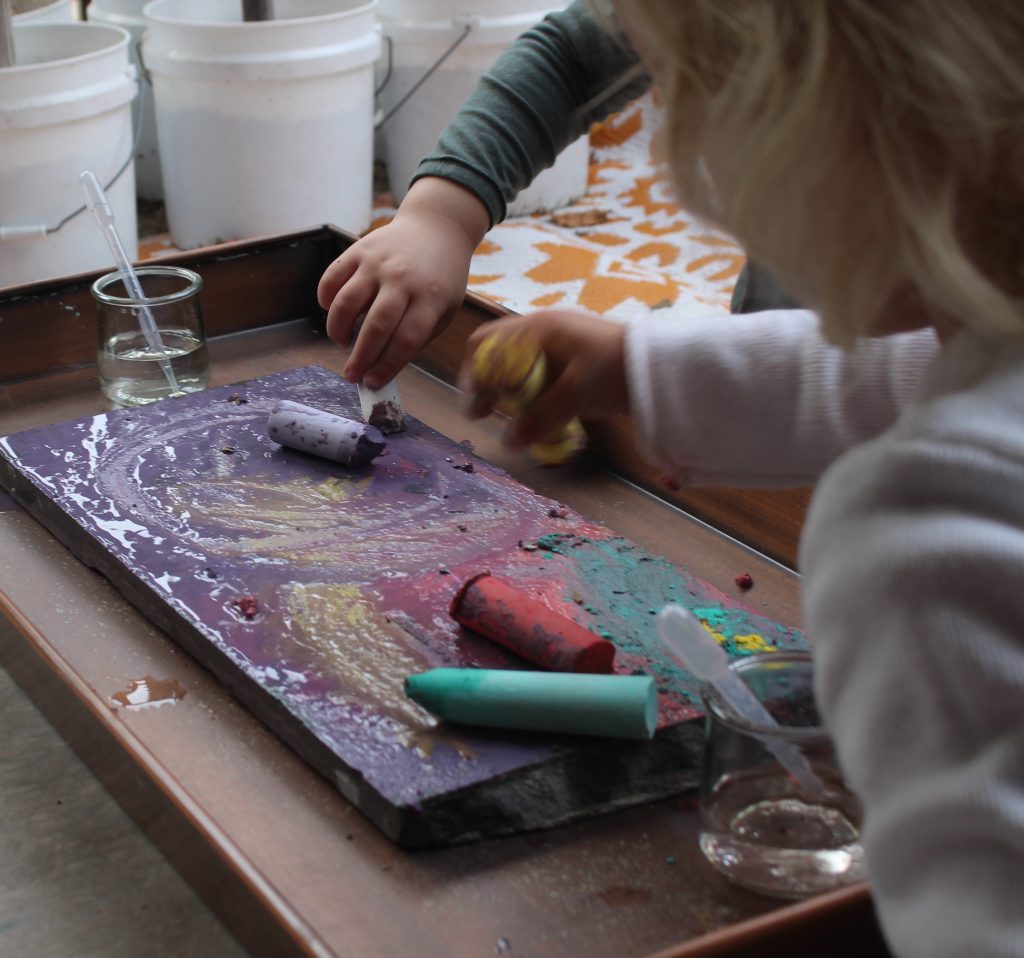
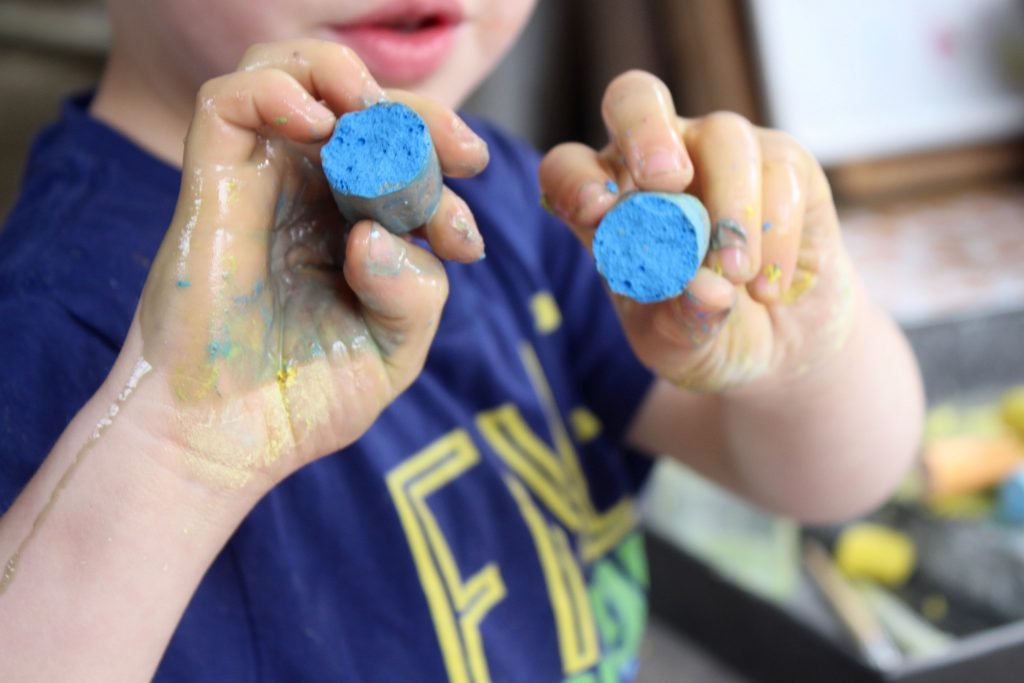
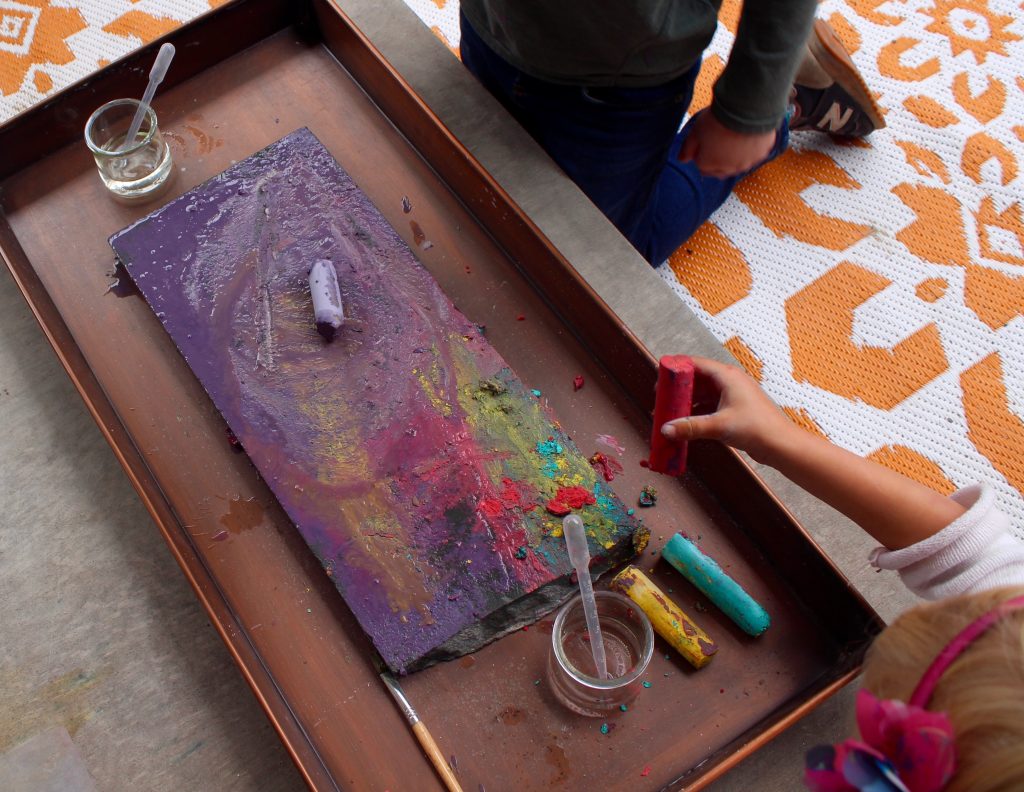
“I dipped the chalk in the water. The water gets all yellow. It was so wet it broke in half.” JOSEF
“Yeah, it breaks when it gets wet.” PARKER
“My purple’s turning red.” PARKER
“And my blue is turning yellow.” JOSEF
“And there’s brown too.” RUBY
“My white’s getting red.” PARKER
“My blue’s getting watery. You know blue and yellow makes green.” JOSEF
“Did you know blue and yellow are primary colors? It means no color can make it. And red too.” AVERY
“Orange isn’t a primary color.” JOSEF
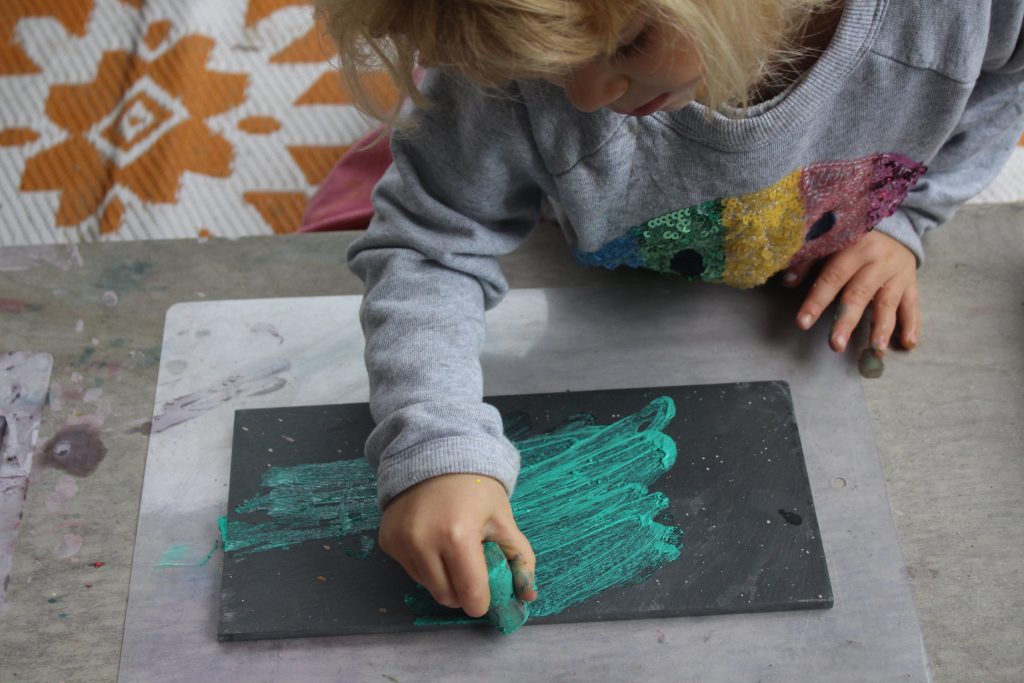
“I was trying to get the water off the thing [slate] because it makes a noise and I don’t like the noise.”
ELEANOR
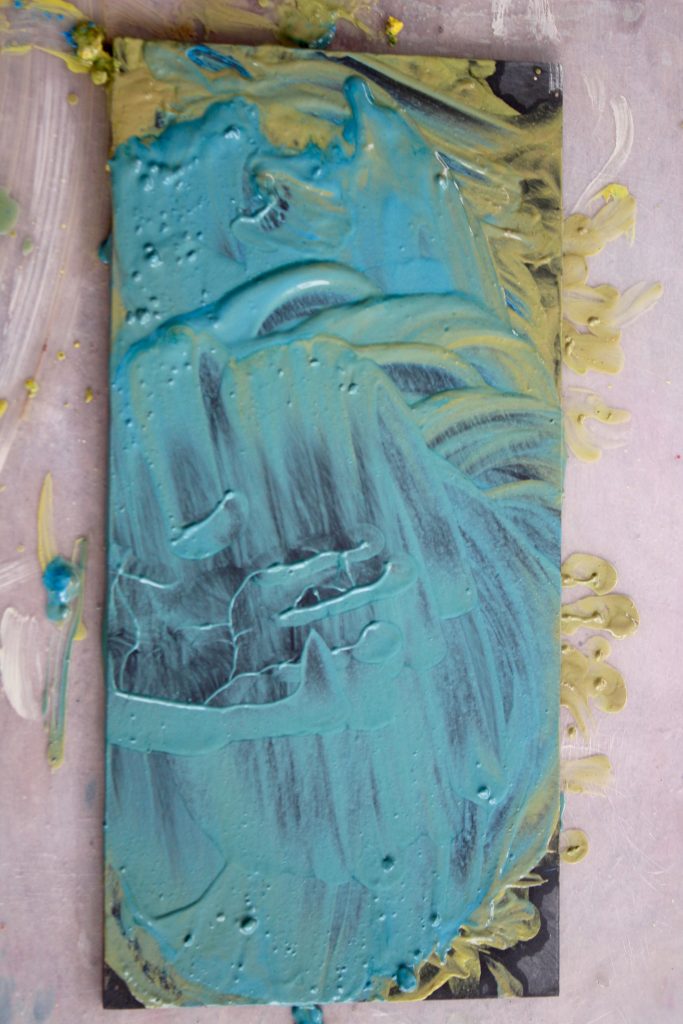
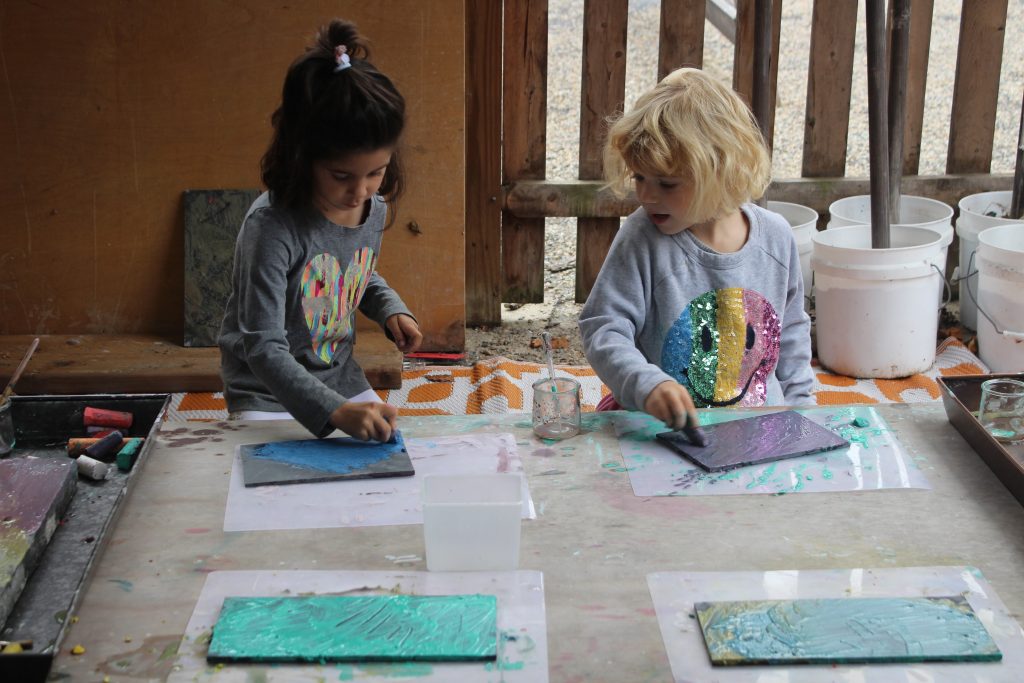
“I’m melting chalk. I’m figuring it out.
See that? I’m still melting the white chalk. I put water on its top with the eye dropper. I put water on the slate too. And then it just starts melting. And look, you can design stuff with the eye dropper! I ran out of water. I know! I can use more wet chalk.” SOPHIE
“I put the teal chalk and then I’m mixing it to see if it melts.
I see a little piece. I’m trying to get it out. It’s the same color as the water. I’m gonna try and get it out again. The paintbrush might work better to stir because this end [of the eye dropper] is pointy. I’m getting water on this chalk.” ALEX
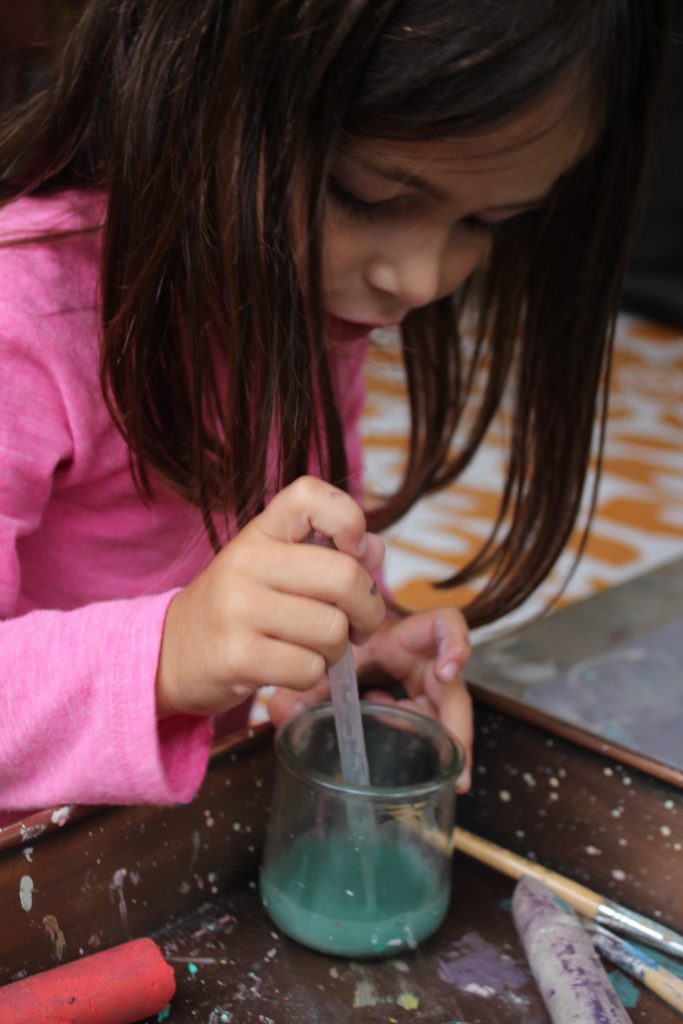
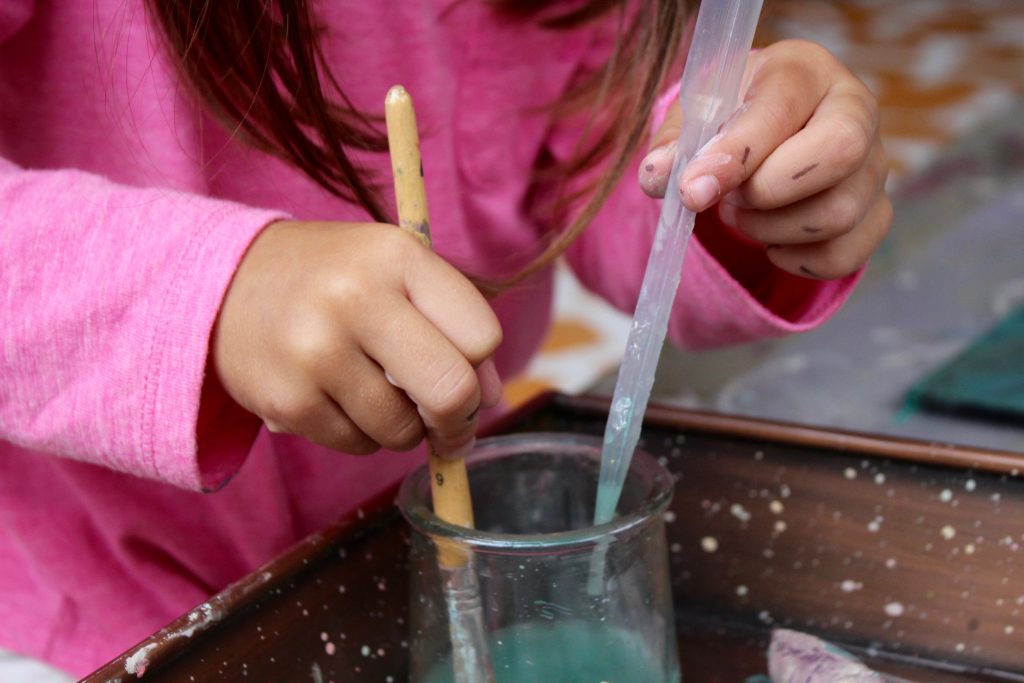
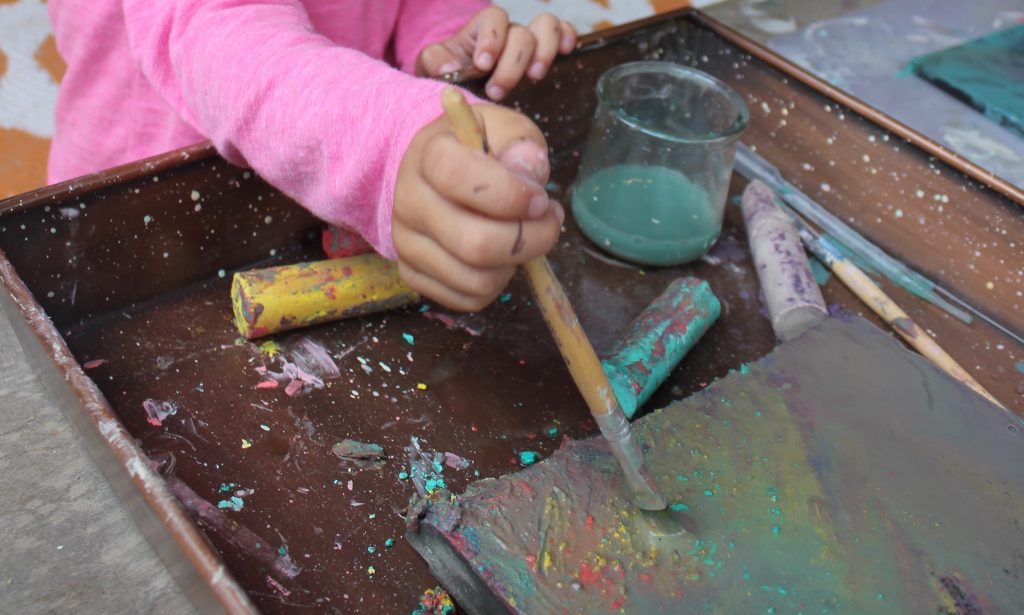
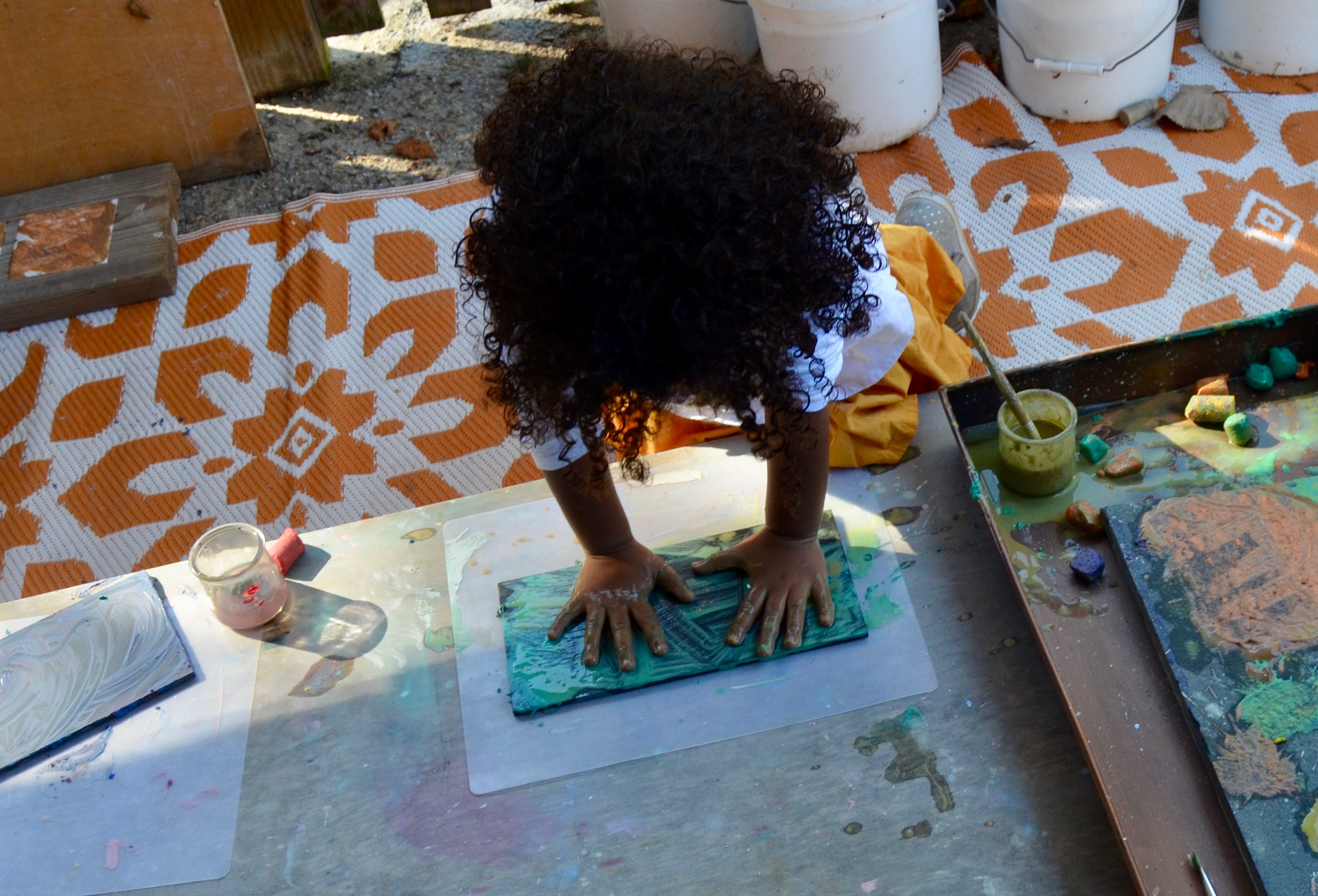
“It got stuck!
Did you think I could add so much water? I’m melting the chalk. More water! Melt, melt, melt… If you add more water it melts. It’s getting gooier. Mine is really short. Rainbow, rainbow. I’m pretending I’m using all the color. It’s going to come to paint. Melt it and melt it and dry it again. It will be paint.” SOFIA
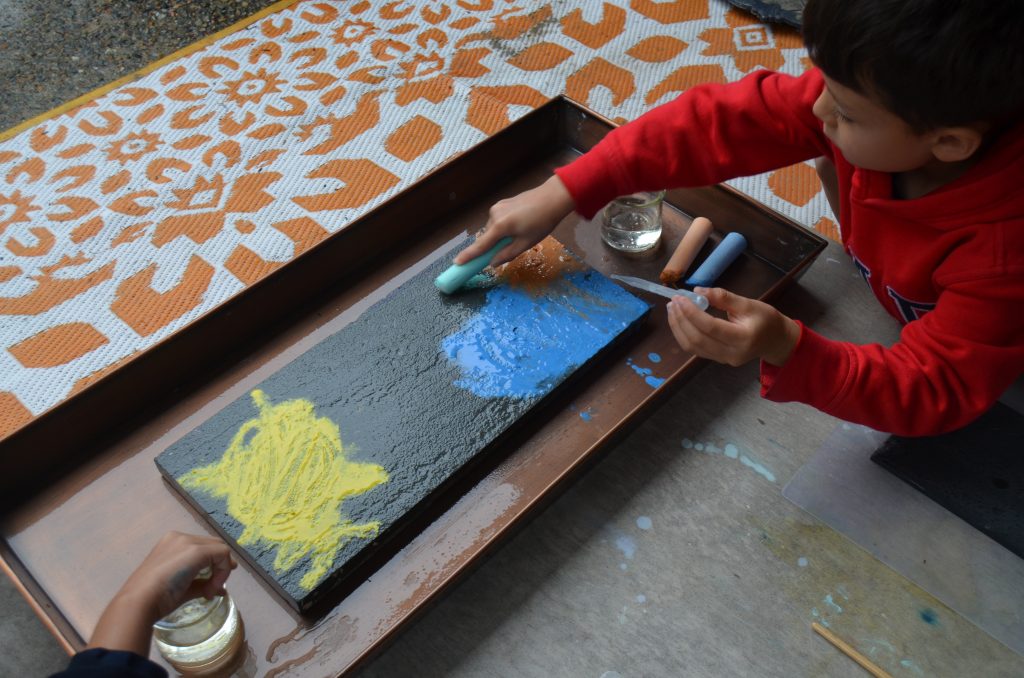
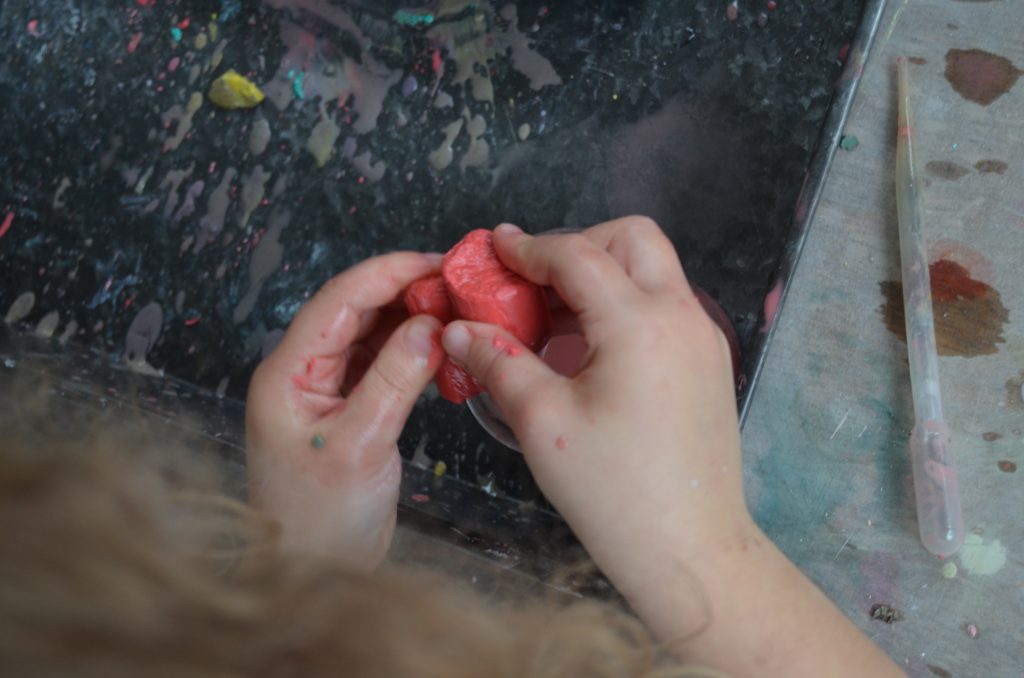
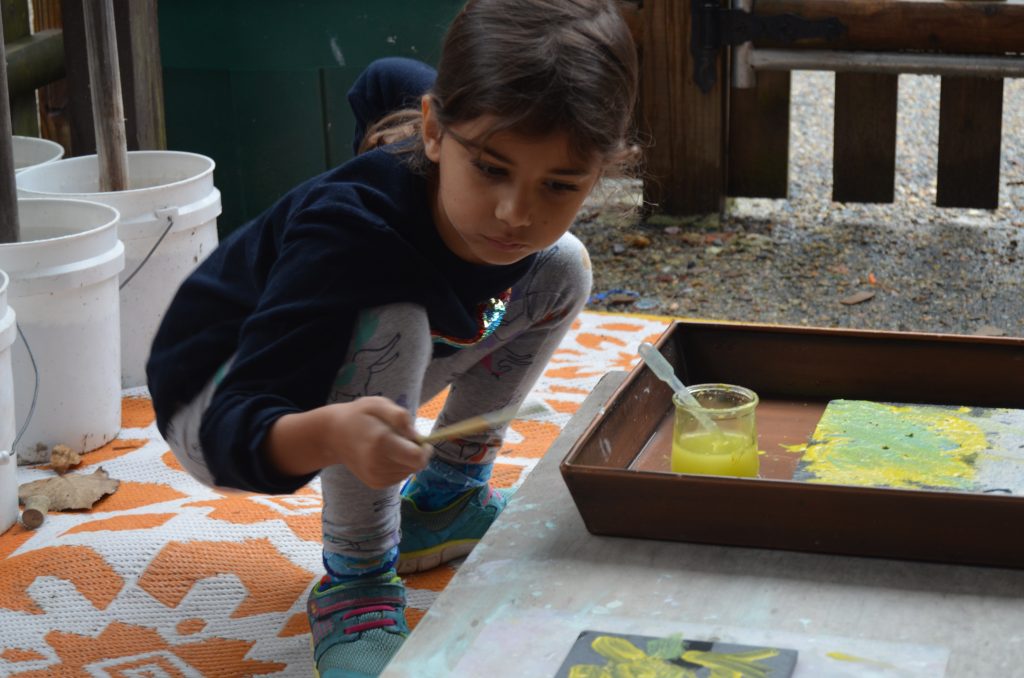
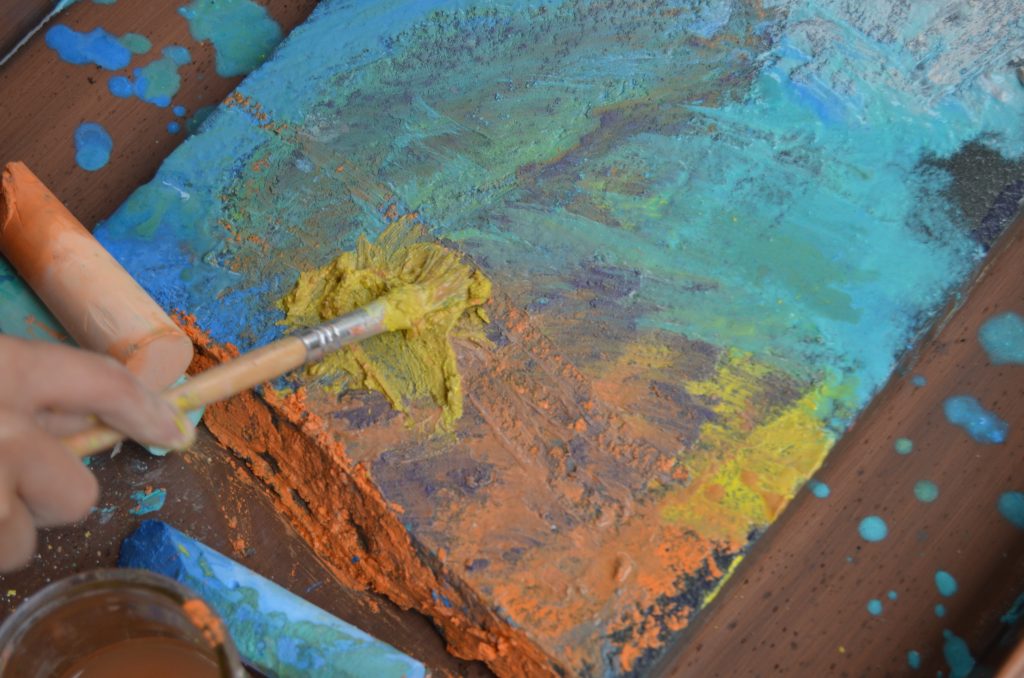
“It’s like clay. The kind of color is like clay. This is like paint. It is chalk. It is paint. Paint chalk!” CALLEN
“It kind of crunched and moved.” AVIA
“It feels kind of like a snake.” ELLIOTT
“Look. Some of this broke off. I made the water pink. I melted these two chalks.” VIOLET, rubbing two chalk pieces.
“When I dunk this in the water it turns golden.” AVIA
“It’s turning into gold. If we dried it, it would turn into gold.” CALLEN
